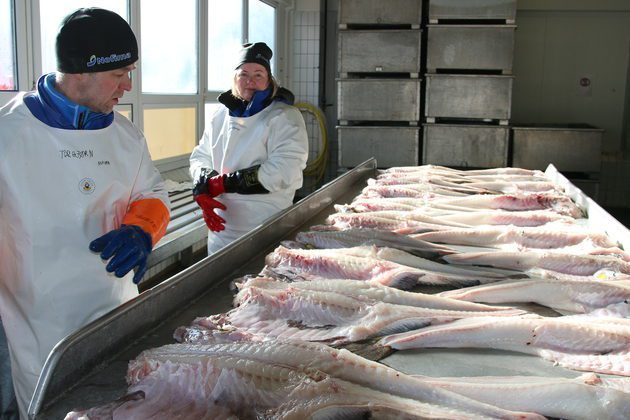SSSTorsk
Quality challenges regarding large seine-caught cod

In this project, we will find out why cod weighing over 8 kilograms caught using seine nets results in a lot of injuries to the fish and thus reduced quality.
Start
02. Jan 2021
End
31. Dec 2023
Funded by
FHF – Norwegian Seafood Research Fund
Cooperation
Brødrene Karlsen, Nergård and MS "Fortuna", M/S "Hallvardson" and M/S "Keipnes".
Project Manager(s):
Other Participants:
Gustav Martinsen
Sjurdur Joensen
Silje Kristoffersen
Stein Harris Olsen
Margrethe Esaiassen
Background
The quality challenges of fishing with seine nets is well known in both industry and research. The problems have been related to large single hauls (20–100 tons) that have resulted in fish with a lot of injuries, lower quality and higher mortality rates compared to smaller catches.
At the same time, this is currently the type of fishing gear that is best suited for catching fish that are to be kept alive on board or for live storage on land.
However, several fish landing facilities have reported significant injuries and blood spots in the flesh of particularly large cod (+8 kg) caught using seine nets.
Goal
Find the causes of injuries and the large amounts of blood in the flesh of large seine-caught cod of 8+ kg
Sub-goals
- Develop a knowledge status based on previous research on the quality of seine-caught fish, especially large cod weighing more than 8 kg, including catch and handling methodology for live catches.
- Through full-scale trials, systematic variation of catch and handling parameters will be carried out to uncover what constitutes good and bad practice in vessels and fish landing facilities.
- Propose, implement and document measures that have been proven to work in trials
This is what we intend to do
Nofima will review and systematise existing literature in the field. Experience-based knowledge will be obtained by gathering industry actors from the fleet and live fish vessels, fish landing facilities, equipment suppliers and research communities for a meeting.
Based on the meeting and existing knowledge, an analysis will be carried out of injuries to cod from seine vessels and at fish landing facilities in the industry at Brødrene Karlsen og Nergård.
One will document the spread in the extent of injuries for each vessel, and whether it is dependent on the size of the fish.
It is important to document whether swim bladder injuries, broken spines or other defects are the dominant injuries sustained by large seine-caught fish. Different injuries can indicate where in the process the injury has occurred.
At the two fish landing facilities, analyses will take place of critical process points such as delivery method, pumping (pipes/bends), containers, lifting/hauling in bulk, falls, plates/gates etc. One will also look at gutting, cutting with regard to cutting errors, crushing, tearing, etc.
Internal transport and storage of fish will also be assessed, as well as the splitting of fish, where focus will be on cutting errors, crushing and tearing.
Based on the meeting, existing knowledge and the results of the analyses, full-scale trials will be carried out on vessels and in the industry at Brødrene Karlsen og Nergård. The trials will be carried out on board seine fishing vessels and at the two fish landing facilities.
The trials are designed to locate and document the most important areas/operations that affect the quality of large fish weighing over 8 kg. This applies when the fish are being caught and when they are delivered at the landing facility, and is based on the matrix from the meeting, as well as the analysis of the extent of injuries from various vessels and fish landing facilities in activity 1.
Therefore, it has not been decided which factors or process steps are to be included in the trials. However, it is assumed that important areas on the fleet side will be (the list is not exhaustive):
- Depth of catch
- Hauling speed
- Moving the fish (with and without a pump)
- During pumping – location of vacuum pump
- Different design of bends and pipe diameters (12, 14 or 16 inches)
- Effect of electrical anaesthesia, with and without, guide ropes/straps, plates/gates and deck equipment.
In the final part of the project, the findings from previous activities will be implemented and documented in order to provide recommendations on how the catch should be carried out (best practice), thereby minimising the extent of injuries to large cod.
Video blog
Catches with seine nets can produce both good quality and catches with significant quality defects.
In this episode of seafood researcher Geirs Sogn-Grundvåg’s video blog on seafood quality, you will learn a little about what has been done to solve the challenges.